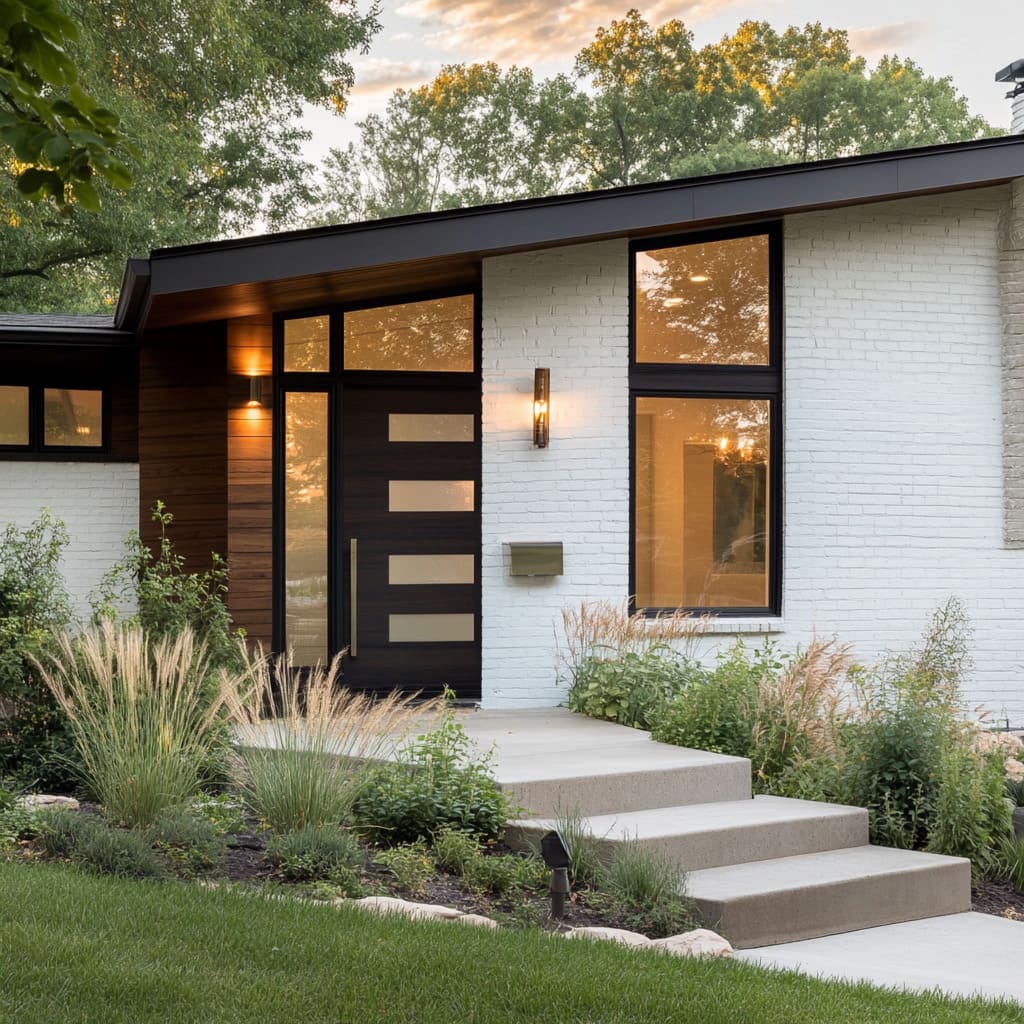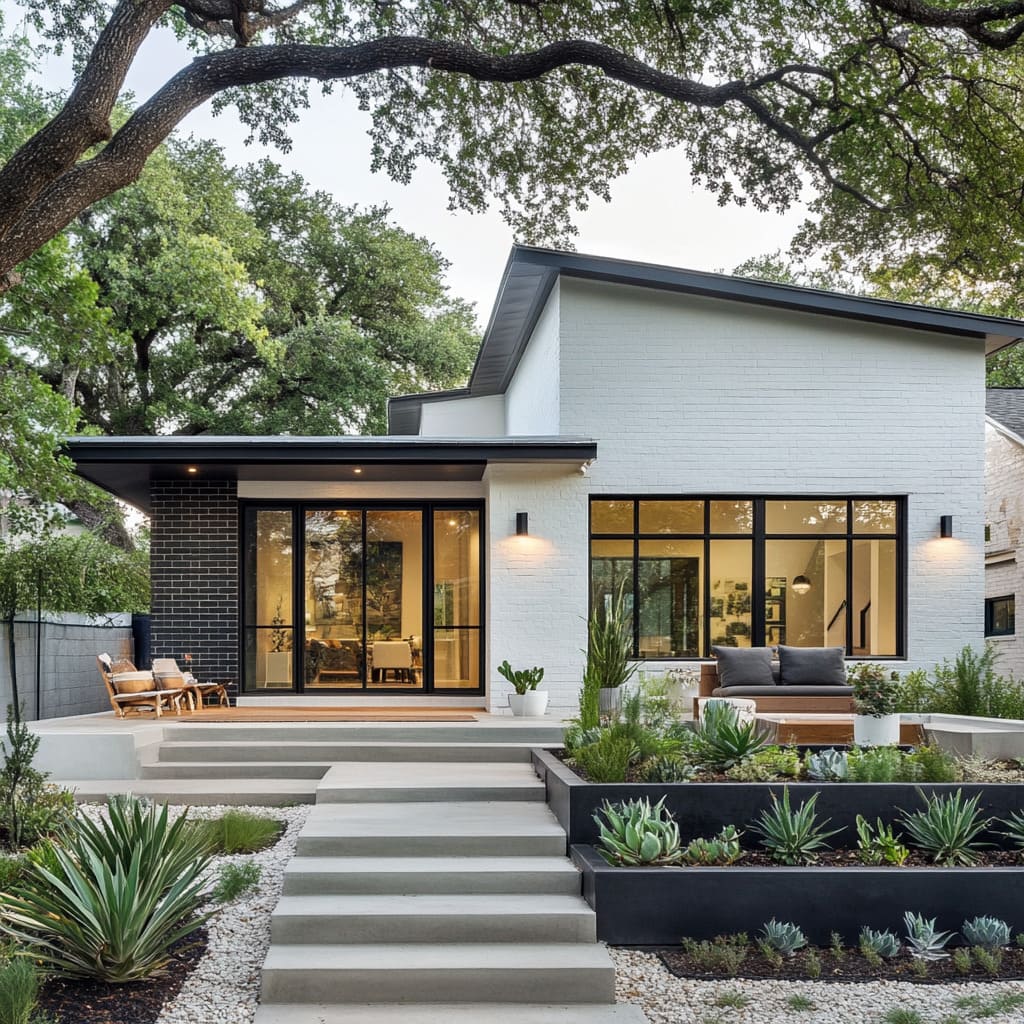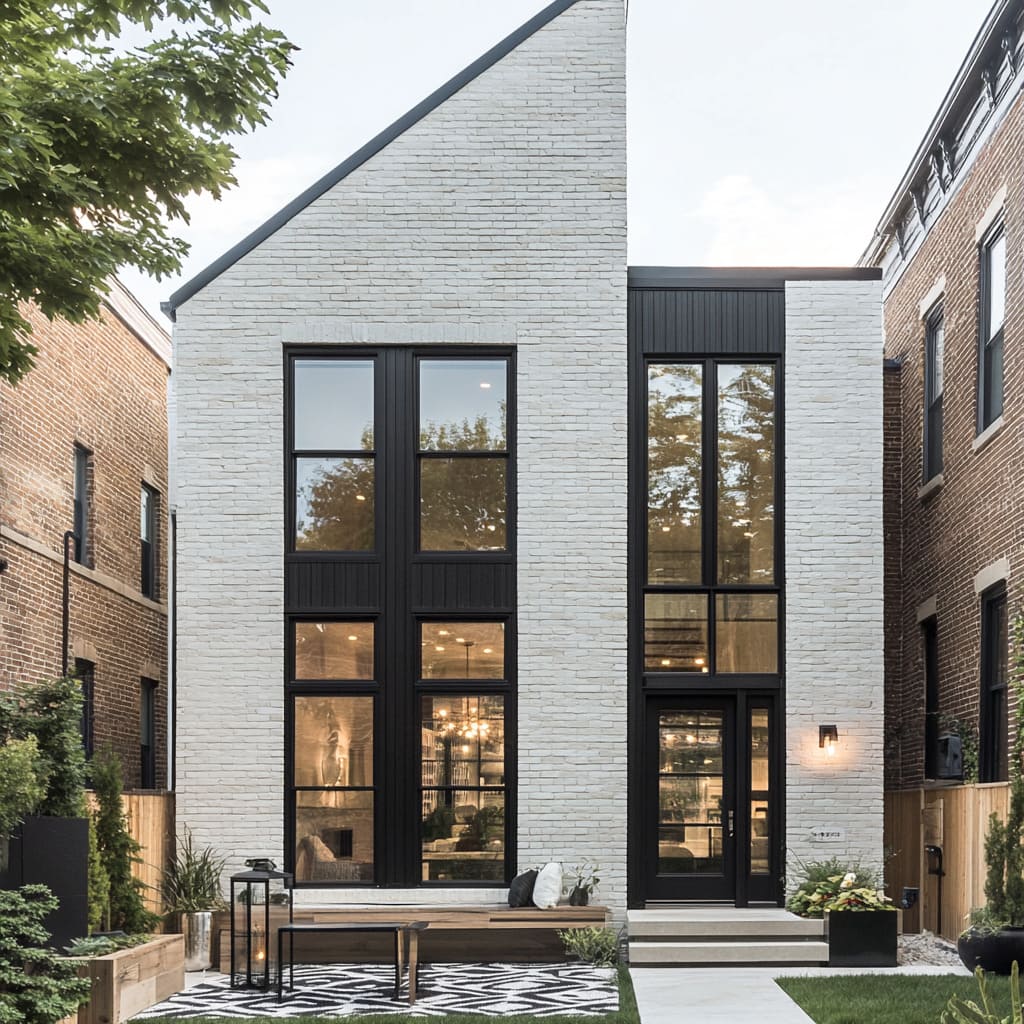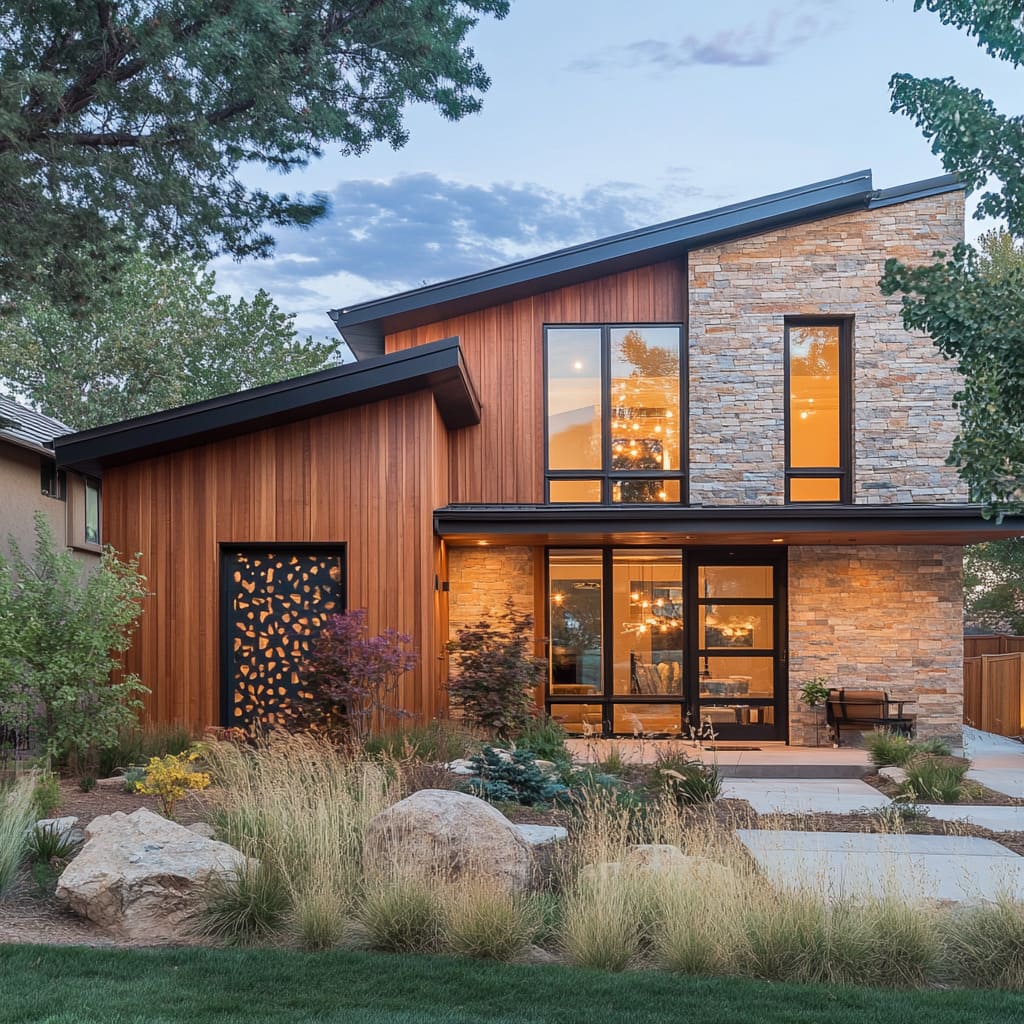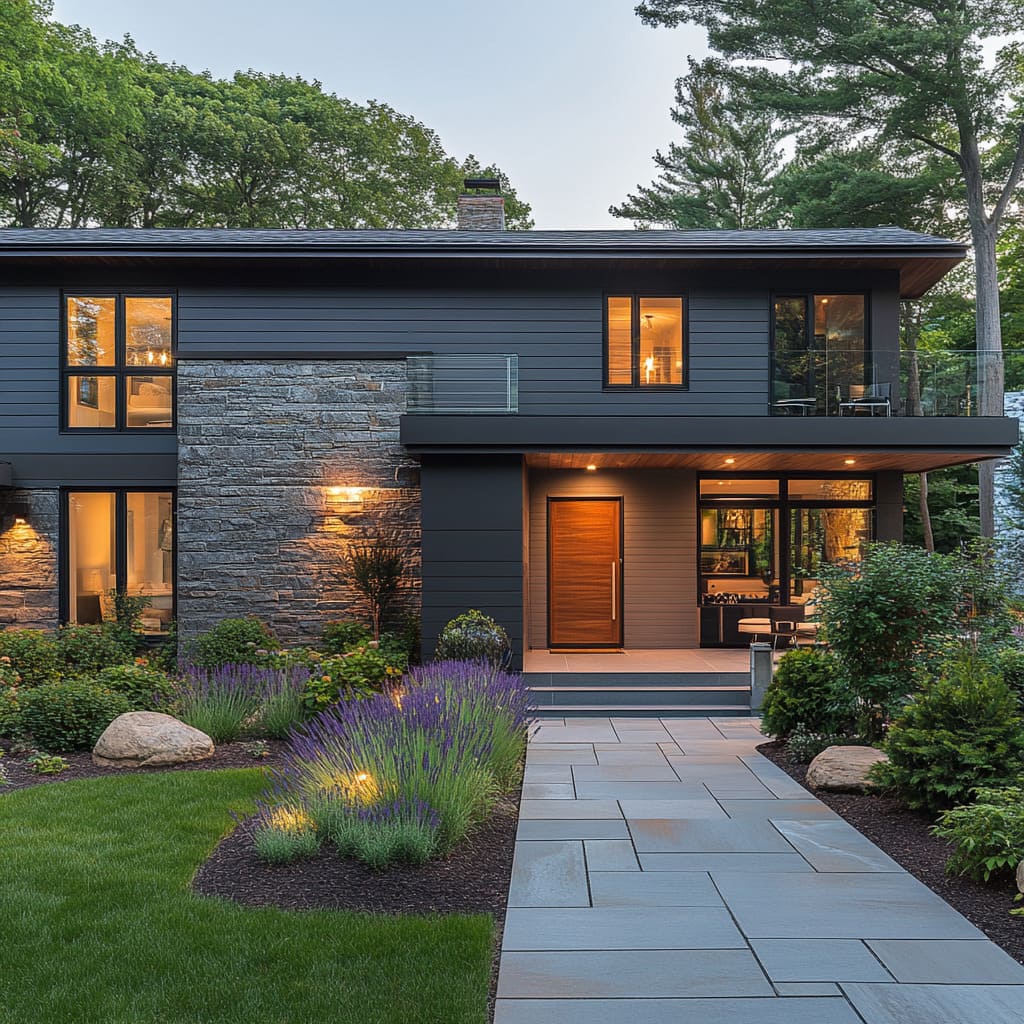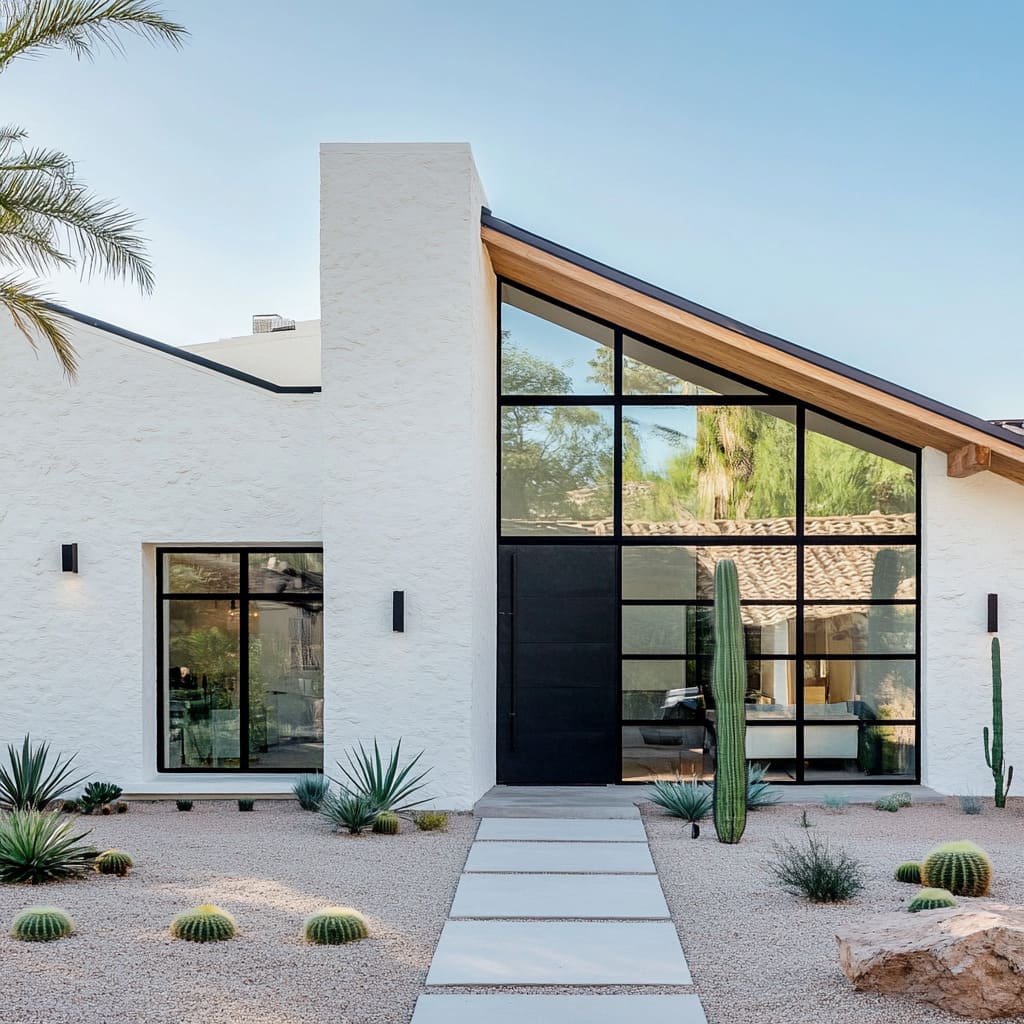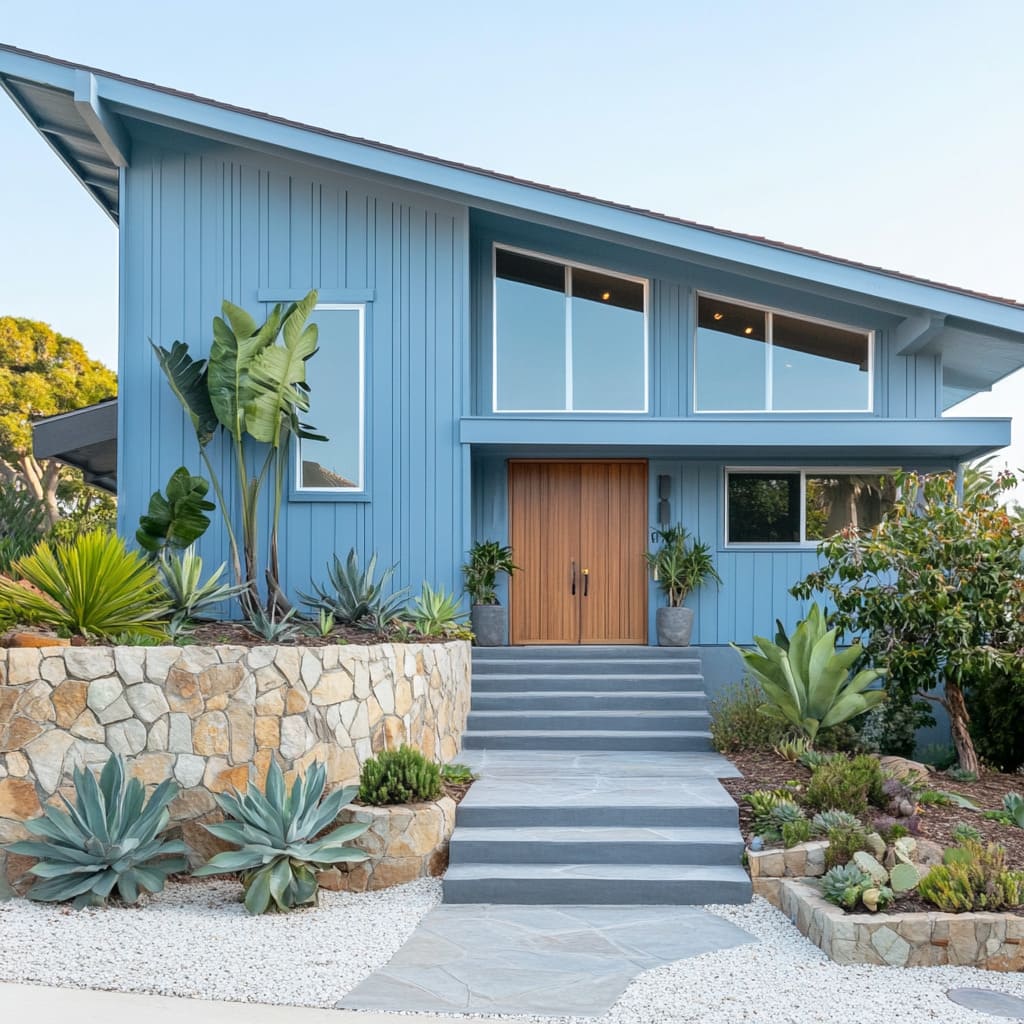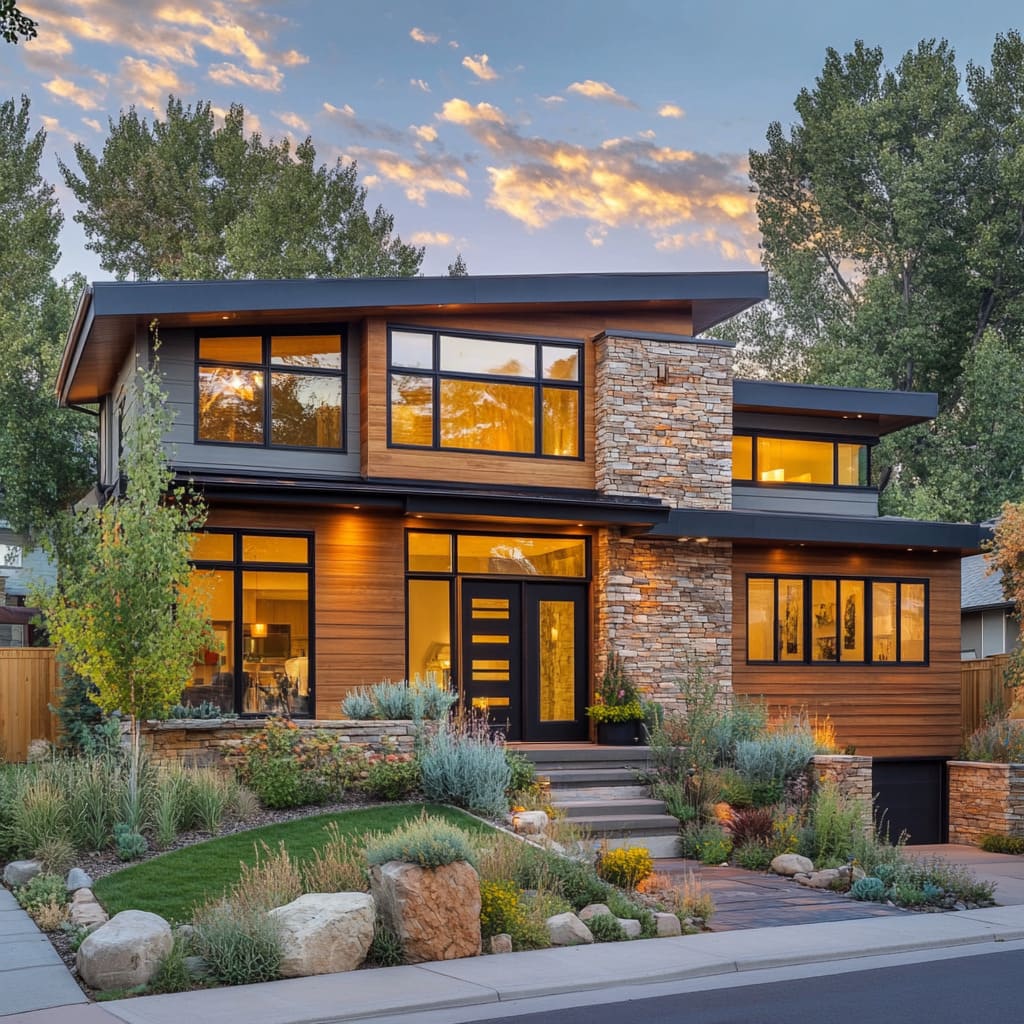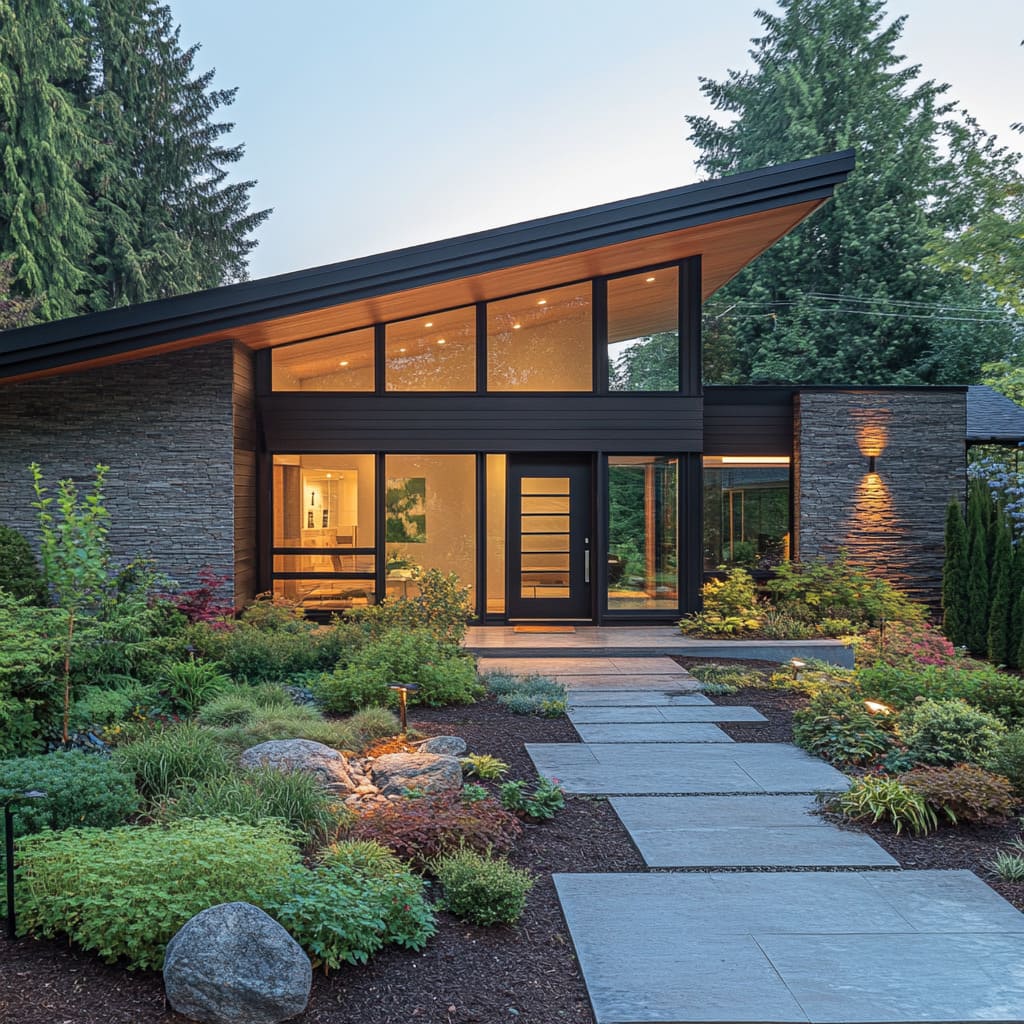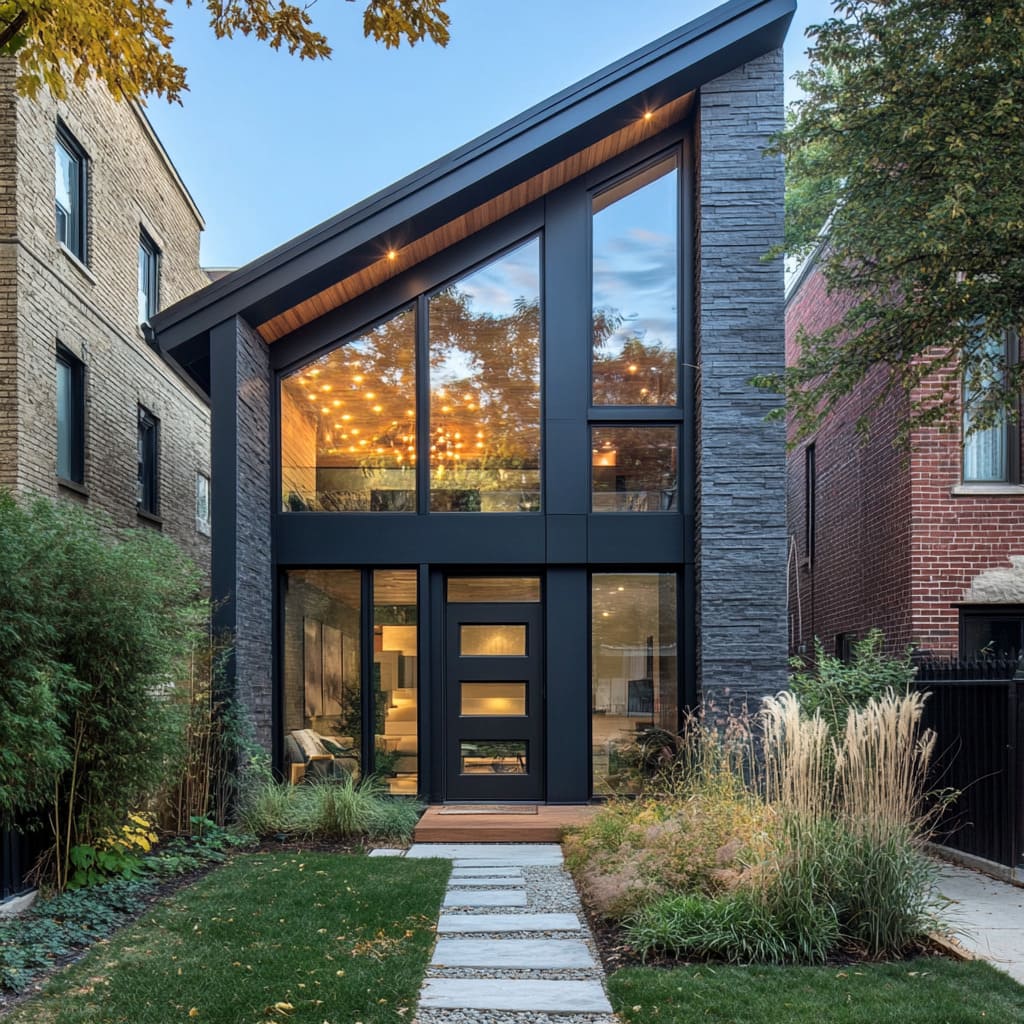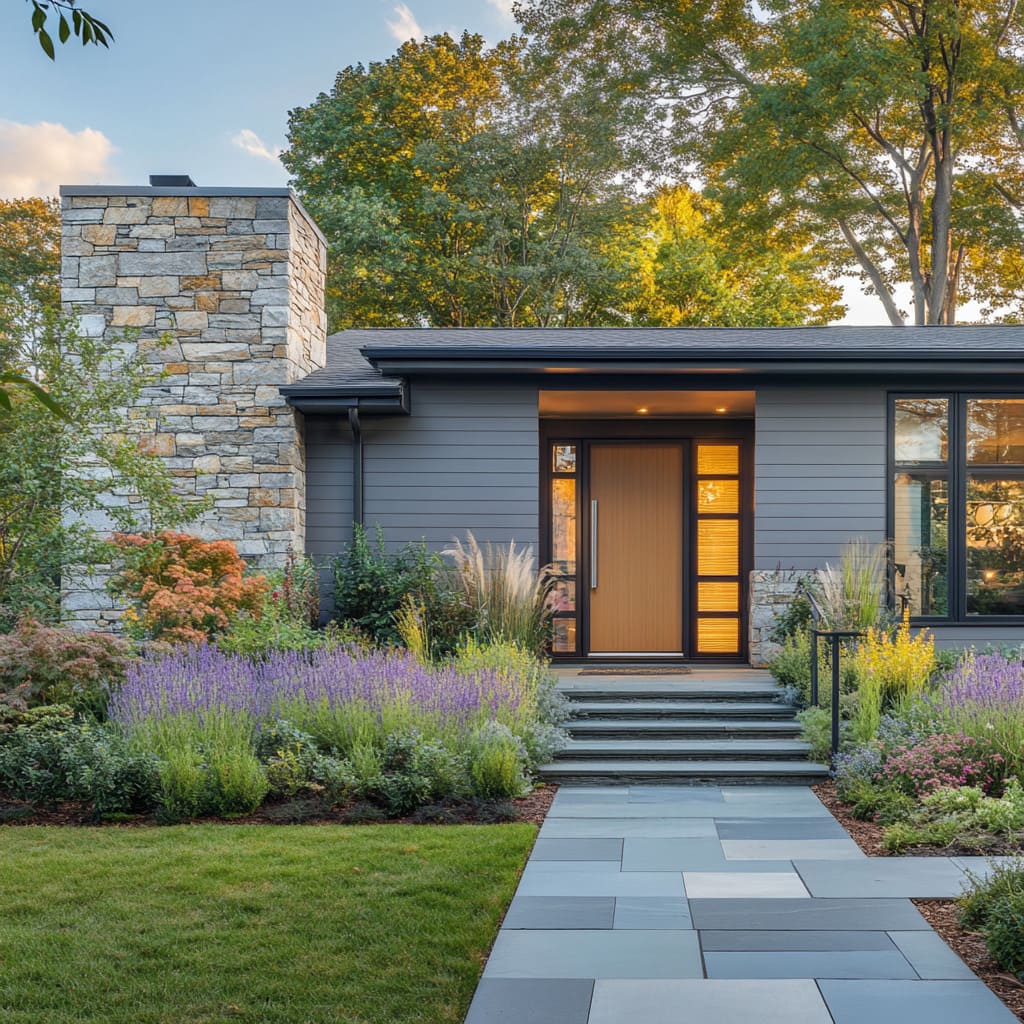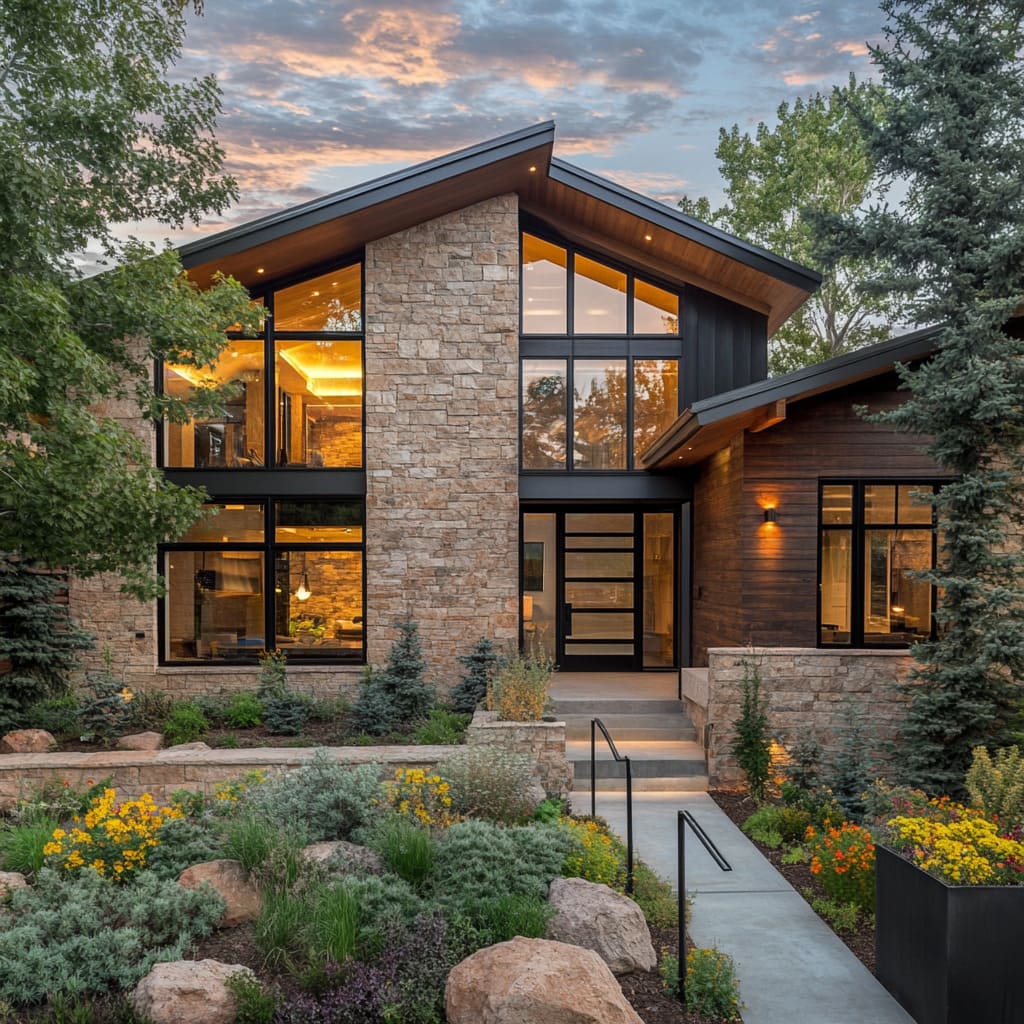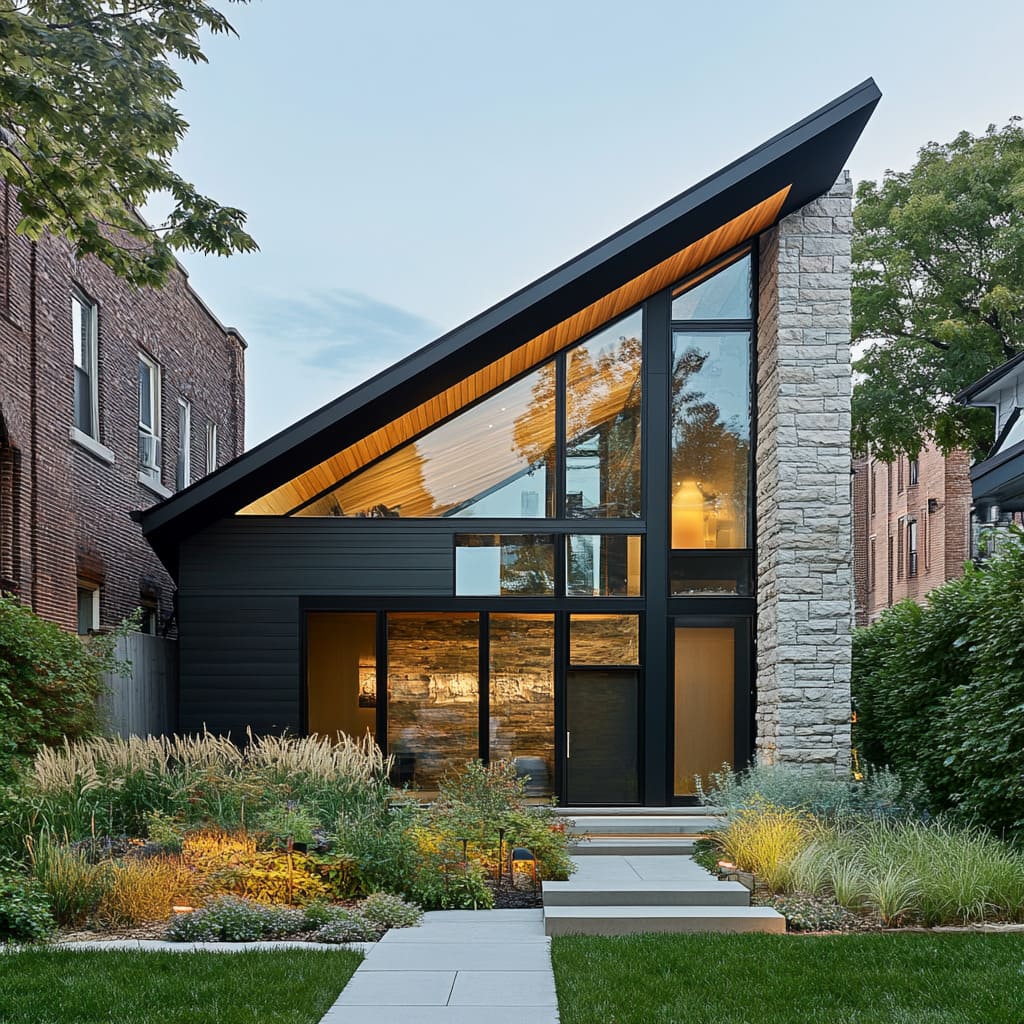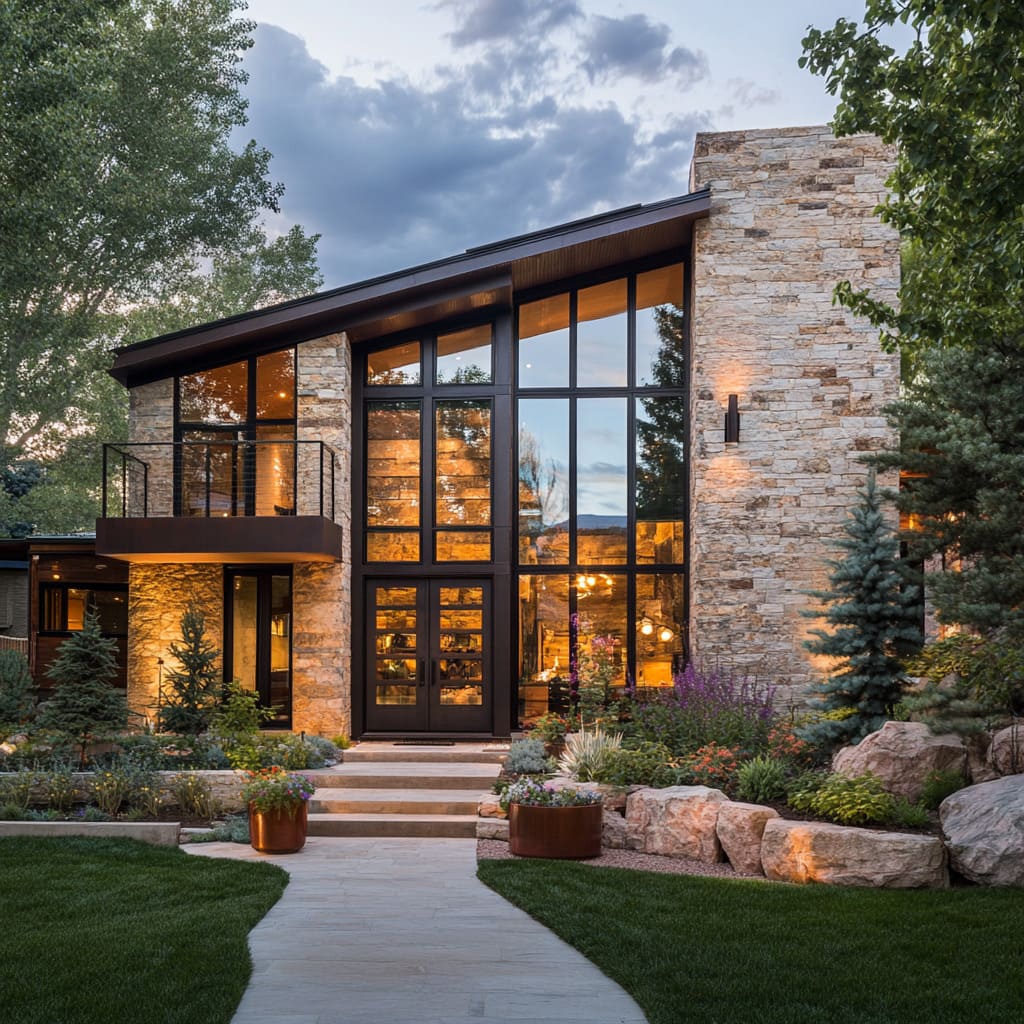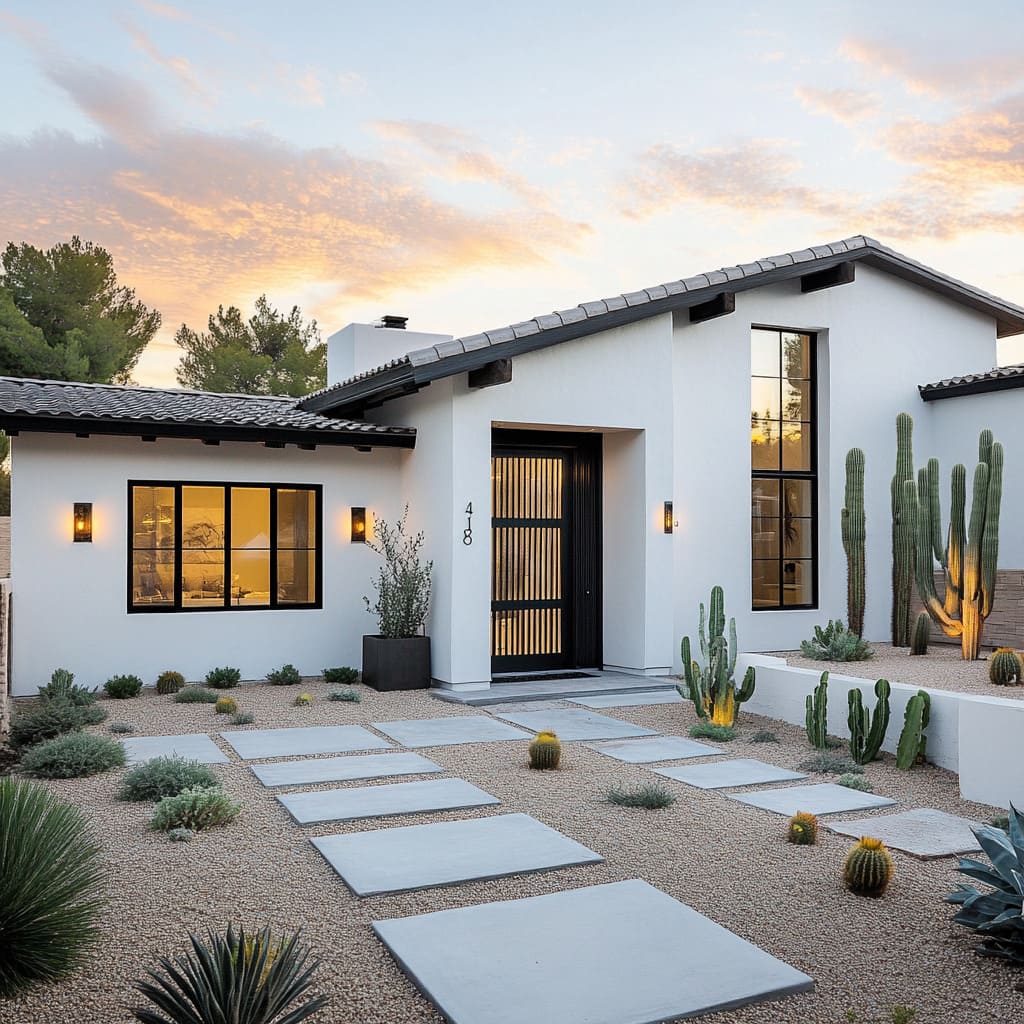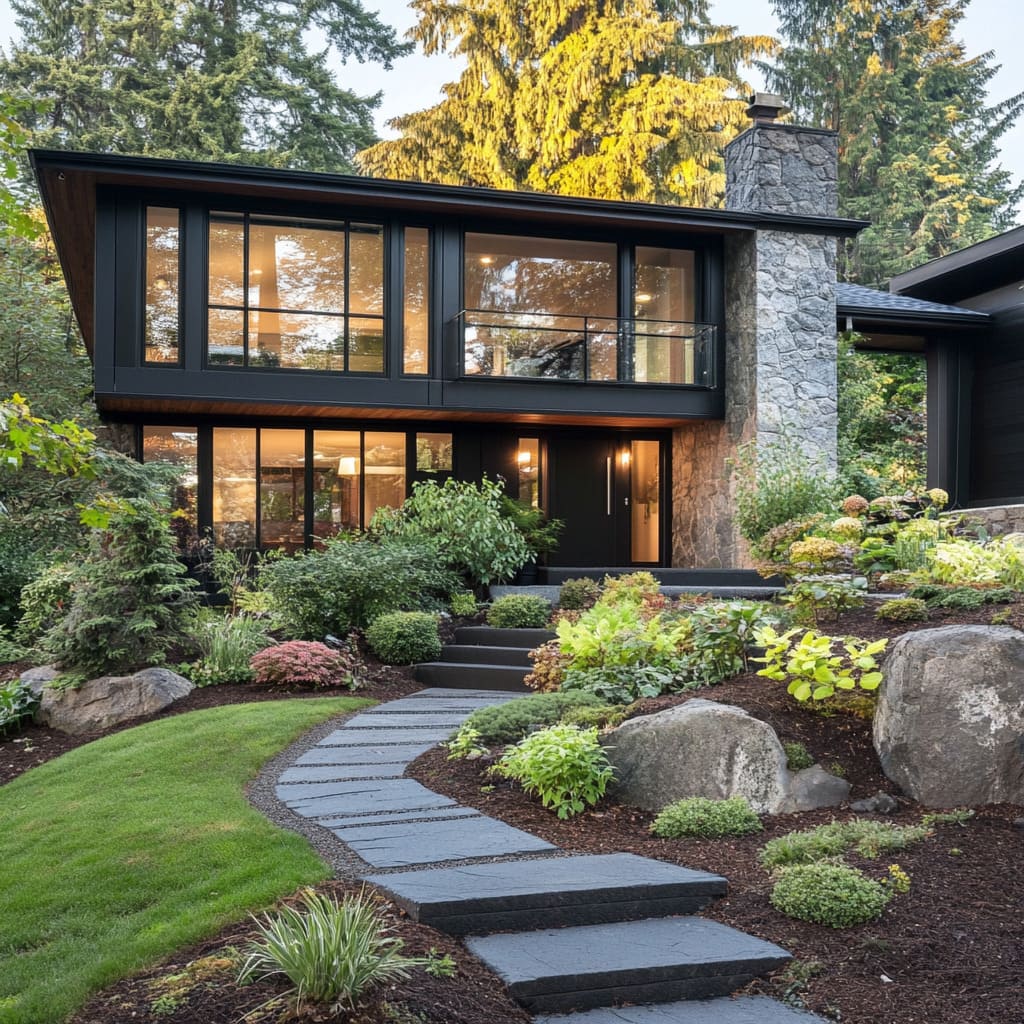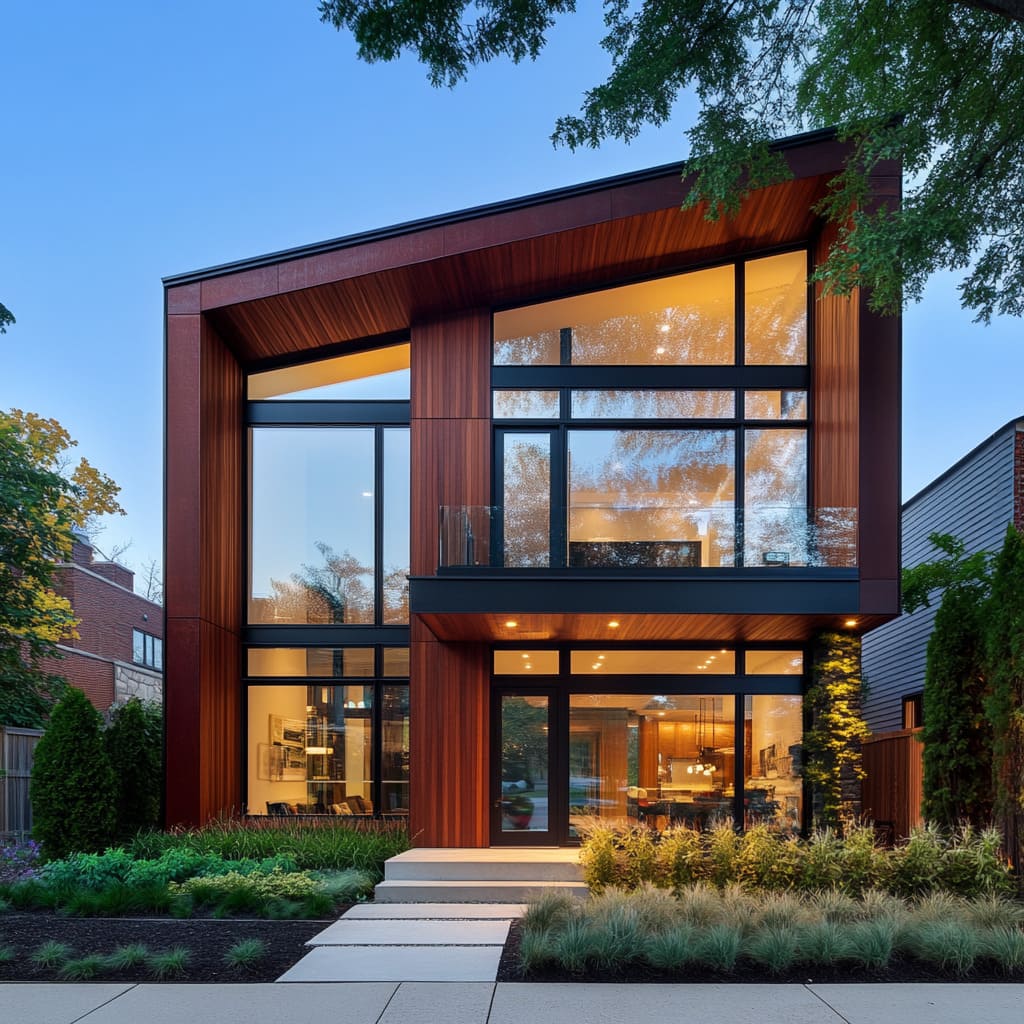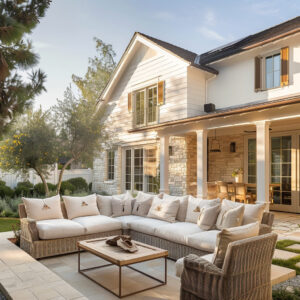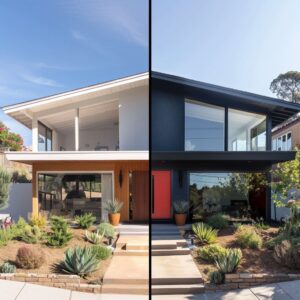In recent years, modern home exteriors have undergone a transformation, focusing on a balanced mix of sharp aesthetics and practical features. Gone are the days when a house was just a protective shell; now, it is a statement of both form and function.
Homeowners are seeking a combination of beauty and usability, and today’s designs meet those expectations by blending sleek lines, natural materials, and energy-efficient features. The result is a harmonious mix of art and practicality, where the exterior not only looks stunning but also enhances the comfort of living within
This article will explore how modern house design achieves this balance. We’ll take a deep dive into key architectural elements, the role of material choices, and the use of natural light, all of which shape the exterior of contemporary homes.
By examining these factors, we’ll understand how they contribute to both style and practicality in today’s homes
Architectural Features That Define Modern Homes
Clean Lines and Geometric Forms
One of the hallmarks of modern house design is its focus on clean lines and sharp, geometric forms. These homes often have a minimalist approach to the facade, with straight edges and carefully considered proportions.
The use of rectangular or cubic shapes gives the structure a sleek and polished appearance, drawing attention to the simplicity of the design rather than embellishments. This focus on simplicity also makes the homes highly efficient in terms of space and energy use, as unnecessary architectural flourishes are minimized.
It’s this combination of efficiency and sharp aesthetics that makes modern homes stand out in any neighborhood
Asymmetrical Rooflines
Another defining feature of contemporary house exteriors is the use of asymmetrical rooflines. Rather than the traditional peaked roof, these homes often have sloped or angled roofs that create a dynamic and modern silhouette.
The practical benefits of these roof designs are just as important as their appearance. Asymmetrical roofs are excellent for rainwater drainage, directing water away from the home’s foundation, which helps prevent damage over time.
Additionally, the overhangs created by these roofs provide shading for large windows, reducing solar heat gain in the warmer months. The result is a design that is as practical as it is visually striking
Transparency and Openness
A key feature that sets modern home design exterior apart from more traditional styles is its focus on transparency and openness. Floor-to-ceiling windows are often a prominent feature, flooding the interior with natural light and creating a strong connection between the inside and the surrounding environment.
This use of large glass panels also allows for uninterrupted views, making the home feel more spacious and connected to the outdoors. Transparency in modern homes isn’t just an aesthetic choice—it’s a way to improve the living experience by maximizing daylight and reducing the reliance on artificial lighting
The Role of Materials: Balancing Warmth and Sleekness
Wood and Warmth
While modern homes are often associated with industrial materials like metal and glass, the use of natural wood adds warmth and balance to their otherwise sleek appearance. Wood cladding, particularly when used on upper levels or as accents, can soften the sharpness of geometric designs, making the home feel more welcoming.
Whether it’s a warm, reddish cedar or a cooler-toned hardwood, the natural grain of wood blends the home into its surroundings, giving it a more organic feel. This balance between sleek and natural materials is key in making a house feel like a modern mansion design without losing its warmth and inviting character
Metal Accents and Framing
Metal plays a crucial role in modern exteriors, adding structure and definition to the design. Black metal window frames, door trims, and balcony railings offer a strong contrast to the softer wood and brick elements, creating a sharp, modern edge.
Metal is not just chosen for its look, though—it’s highly durable, resistant to weather, and requires minimal maintenance. Its role in framing windows and doors emphasizes the clean lines of the house, giving it a crisp, polished finish
Brick and Stone for Texture and Durability
Modern home design often incorporates brick and natural stone for added texture and durability. These materials offer a tactile contrast to smoother surfaces like glass and metal, grounding the home with a sense of solidity.
Painted brick exteriors provide a timeless, low-maintenance solution, while natural stone adds a rustic yet refined touch. Both materials are excellent insulators, helping to keep the home’s interior comfortable throughout the year, making them not only beautiful but also practical choices in contemporary house exteriors
Maximizing Natural Light with Thoughtful Window Design
Expansive Windows and Glass Walls
One of the most defining characteristics of modern homes is the use of large, expansive windows and glass walls. These elements create a sense of openness and transparency, dissolving the boundaries between indoor and outdoor spaces.
Whether it’s a living room that opens up to a garden or a bedroom with panoramic views, these glass features make the home feel airy and spacious. In terms of functionality, they allow for a steady flow of natural light, reducing the need for artificial lighting during the day and making the home more energy-efficient
Energy-Efficient Window Placement
Strategic window placement plays a critical role in reducing a home’s energy consumption. Modern homes use carefully planned window orientations to capture natural light while minimizing heat loss in cooler months and preventing overheating in warmer ones.
High-performance glass ensures that these windows not only allow light in but also prevent excessive heat transfer, making the home more comfortable year-round. By balancing the amount of glass with proper shading from roof overhangs or trees, modern homes maintain a pleasant interior climate without relying heavily on mechanical systems
Framing for Style and Function
The choice of window frames is essential for both style and function. Black metal frames, commonly seen in modern home design, are both a practical and aesthetic choice.
They provide a sharp, sleek look that complements the overall geometric structure of the home, while their durability ensures they stand up to weather and time. Metal frames also offer the strength needed to support large glass panels, allowing for expansive windows without compromising structural integrity.
These frames are designed not only to accentuate the home’s style but also to improve its overall function
The Importance of Rooflines in Modern Home Design
Bold Angles and Overhangs
Rooflines are a defining characteristic in many modern house exterior ideas. Unlike the simple peaked roofs of traditional homes, modern rooflines often feature bold angles and asymmetry, creating a more dynamic visual effect.
These sloping and angular roofs aren’t just about aesthetics; they also serve important functional purposes. The slopes direct rainwater away from the structure, which helps prevent water damage to both the roof and the foundation.
In regions with heavy rain or snow, this type of roof can drastically reduce long-term maintenance issues
Additionally, the sharp angles create architectural interest and make a home instantly recognizable. The lines of a sloping roof often mimic the contours of the landscape, giving the house a grounded, organic presence.
These bold angles also create interesting interior spaces, often leading to high ceilings that allow for more natural light to flood the home. This combination of functionality and design helps shape the home’s character in a way that is both practical and visually engaging
Overhangs for Practical Shading
A feature commonly seen in contemporary home exterior ideas is the deep roof overhang. This architectural element is not just for style; it serves a crucial role in regulating the internal temperature of a house.
Large glass windows, which are a hallmark of modern homes, invite a flood of natural light. While this openness is beautiful, too much direct sunlight can cause the interior to overheat.
Deep roof overhangs provide natural shading, reducing the amount of direct sunlight that hits the windows and preventing excessive heat buildup inside
This passive form of cooling is a clever design feature that minimizes the need for air conditioning, especially in warmer climates. The extended overhang also protects the window frames and facade from harsh weather conditions, such as rain and wind, which could degrade materials over time.
In this way, overhangs are a simple yet effective feature that enhances both the aesthetic and practical functions of a modern home
Landscaping: Enhancing Curb Appeal and Sustainability
Minimalist Landscaping for Modern Homes
In modern home design, the landscaping is as much a part of the overall aesthetic as the architecture itself. A minimalist approach to landscaping complements the clean lines and geometric shapes seen in contemporary homes.
Instead of dense plantings and intricate garden beds, modern homes often feature simple, structured landscaping with carefully chosen plants. Low-maintenance greenery, such as ornamental grasses or neatly trimmed hedges, is arranged in geometric patterns to reflect the linear quality of the home’s exterior
Minimalist landscaping allows the architectural design to take center stage while still adding a touch of nature. It also reduces the upkeep required by the homeowner, making it a more sustainable choice for busy lifestyles.
The result is a front yard that not only looks polished but also complements the overall design language of the home, enhancing its curb appeal without overpowering the sleek architecture
Drought-Tolerant and Native Plant Choices
Sustainability is an important consideration in any modern house exterior. Many modern homes opt for drought-tolerant plants, such as succulents or native grasses, which require less water and maintenance.
These plants are perfect for regions that experience hot, dry climates, as they thrive without constant irrigation. Not only do they add visual interest and texture to the landscaping, but they also contribute to a more eco-friendly living environment.
Native plants are also a practical choice because they are adapted to the local climate and soil conditions, which means they require fewer resources to grow and flourish. Incorporating these plants into modern home landscaping not only makes the garden more sustainable but also reduces the need for chemical fertilizers or pest control measures, keeping the surrounding ecosystem healthier
Hardscaping and Pathways
Modern home landscapes often incorporate hardscaping elements, such as concrete slabs, raised planters, or clean stone pathways. These hard materials are chosen for their simplicity and durability, adding structure to the outdoor space without requiring constant maintenance.
In particular, concrete pathways are a popular choice, often arranged in geometric patterns to mirror the sharp angles and lines of the home itself. Integrated lighting along these pathways enhances both the safety and the appearance of the exterior, creating a welcoming atmosphere at night.
Raised planters with drought-tolerant plants add vertical interest to the landscape, while also ensuring that the garden beds remain tidy and easy to maintain. These hardscaping features continue the geometric, minimalist aesthetic from the house into the outdoor space, creating a cohesive, modern look that ties everything together
Sustainability and Energy Efficiency in Modern Exteriors
Energy-Efficient Materials and Design
Sustainability is a key factor in contemporary house interior design, but it also plays a huge role in the exterior. Modern homes often incorporate energy-efficient materials such as high-performance glass, insulated wood, and natural stone.
These materials are chosen not only for their beauty but for their ability to regulate indoor temperatures and reduce energy consumption. For example, energy-efficient glass windows keep homes cool in the summer and warm in the winter by minimizing heat transfer.
Wood, when properly treated, can act as a natural insulator, while stone cladding helps maintain a stable temperature inside the home. This combination of materials not only reduces the home’s environmental footprint but also enhances its overall aesthetic, proving that sustainability and style can go hand in hand in modern architecture
Passive Cooling and Heating Design
Modern house exterior ideas often rely on passive design principles to minimize energy consumption. Roof overhangs, as mentioned earlier, are a classic example of how modern homes use architecture to regulate temperature naturally.
The positioning of windows also plays a crucial role in passive heating and cooling. For instance, large south-facing windows capture sunlight in the winter, warming the home naturally.
In the summer, those same windows are shaded by overhangs or trees, keeping the interior cool. Incorporating natural ventilation systems and selecting materials that respond to the local climate allows modern homes to maintain comfort without over-reliance on mechanical systems.
This focus on passive design strategies enhances the sustainability of the home while keeping energy costs low
Durability and Low Maintenance
When choosing materials for modern exteriors, durability is often a top priority. Materials like metal, treated wood, and natural stone are chosen for their ability to withstand weather conditions and require little upkeep.
Metal, for example, is often used for window frames, railings, and roof accents because of its ability to resist corrosion and wear over time. Treated wood not only brings warmth to a home’s facade but also resists rot and insect damage, ensuring that it remains beautiful with minimal maintenance.
Similarly, natural stone is a long-lasting material that adds texture and depth to the home’s design while requiring very little care. These durable materials are a practical investment, ensuring that the home remains visually appealing and structurally sound for years to come
Blurring the Line Between Indoor and Outdoor Spaces
Seamless Transitions Through Glass and Openings
Modern homes have become adept at blurring the distinction between indoor and outdoor environments, creating a seamless flow that enhances both aesthetics and functionality. The key to achieving this lies in the strategic use of large windows, sliding glass doors, and other openings that allow the indoor living space to merge effortlessly with the exterior
Floor-to-ceiling windows are a staple of modern exterior house ideas, offering expansive views of the outdoors while inviting natural light to flood the interior. These windows not only connect the indoor and outdoor environments visually but also create a sense of openness that extends beyond the home’s walls.
Sliding glass doors, another popular feature, further enhance this connection by providing direct access to patios, decks, and gardens. When fully opened, these doors dissolve the boundary between inside and outside, allowing the two spaces to flow into one another
Balconies and Decks
The use of balconies and decks plays a significant role in this seamless transition between indoor and outdoor spaces. Modern homes frequently feature glass-railed balconies that provide unobstructed views while maintaining an open and airy feel.
These balconies are typically connected to bedrooms or living spaces, offering a private outdoor retreat that enhances the overall experience of the home. Glass railings are particularly effective in maintaining visual continuity, ensuring that the balcony feels like a natural extension of the indoor space
Wooden decks are another common element in modern house facade design. These decks serve as an outdoor continuation of the home’s living spaces, offering practical areas for dining, lounging, or socializing.
Positioned directly outside kitchens, living rooms, or dining areas, these decks provide a seamless transition for homeowners who want to enjoy fresh air without sacrificing comfort. Whether equipped with outdoor furniture, fire pits, or planters, decks and balconies offer a versatile, functional space that complements the interior design.
The placement of these outdoor features is always thoughtful, ensuring that they enhance the home’s visual appeal while adding practicality. Whether designed for private relaxation or entertaining guests, balconies and decks bridge the gap between the home and its surrounding environment, enriching the overall living experience
Conclusion
Throughout this exploration of contemporary house exterior design ideas, we’ve seen how modern homes achieve a careful balance between style and functionality. The defining architectural features—such as clean lines, bold roof designs, and expansive windows—set the stage for visually striking homes that remain practical for everyday living.
Material choices like wood, metal, and stone create warmth and durability, while thoughtful landscaping enhances curb appeal without demanding excessive maintenance. Meanwhile, energy efficiency is a priority, with modern designs incorporating passive cooling and heating strategies alongside sustainable materials to reduce environmental impact
Ultimately, modern home exteriors are about more than just visual impact. They embody a philosophy that values sustainability, functionality, and comfort.
The seamless integration of indoor and outdoor spaces, paired with thoughtful design elements, creates homes that are not only aesthetically pleasing but also deeply connected to their environment. Modern homes offer a new perspective on living spaces—where design doesn’t stop at the walls but extends into the surrounding world, fostering a living experience that’s in tune with nature and the everyday needs of homeowners

